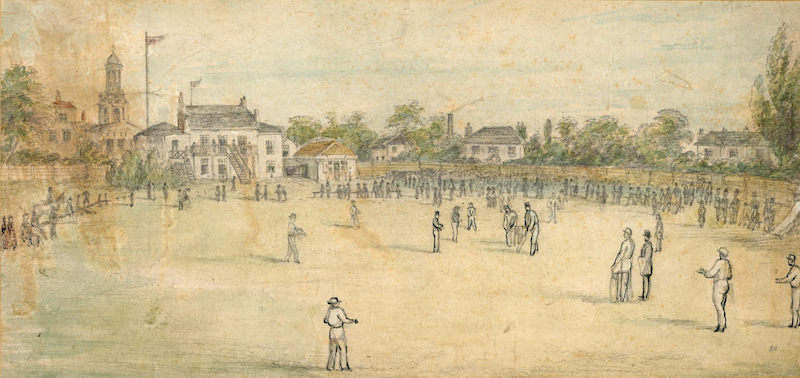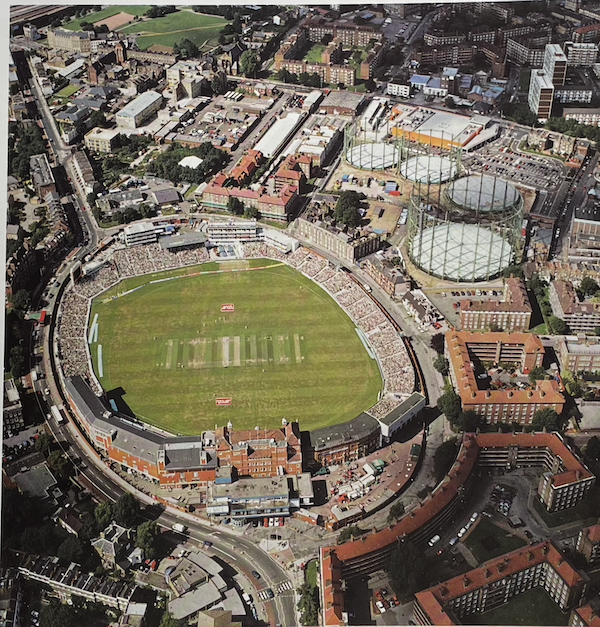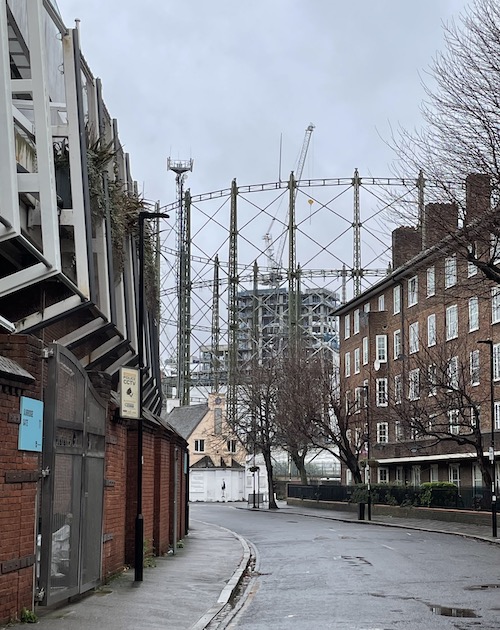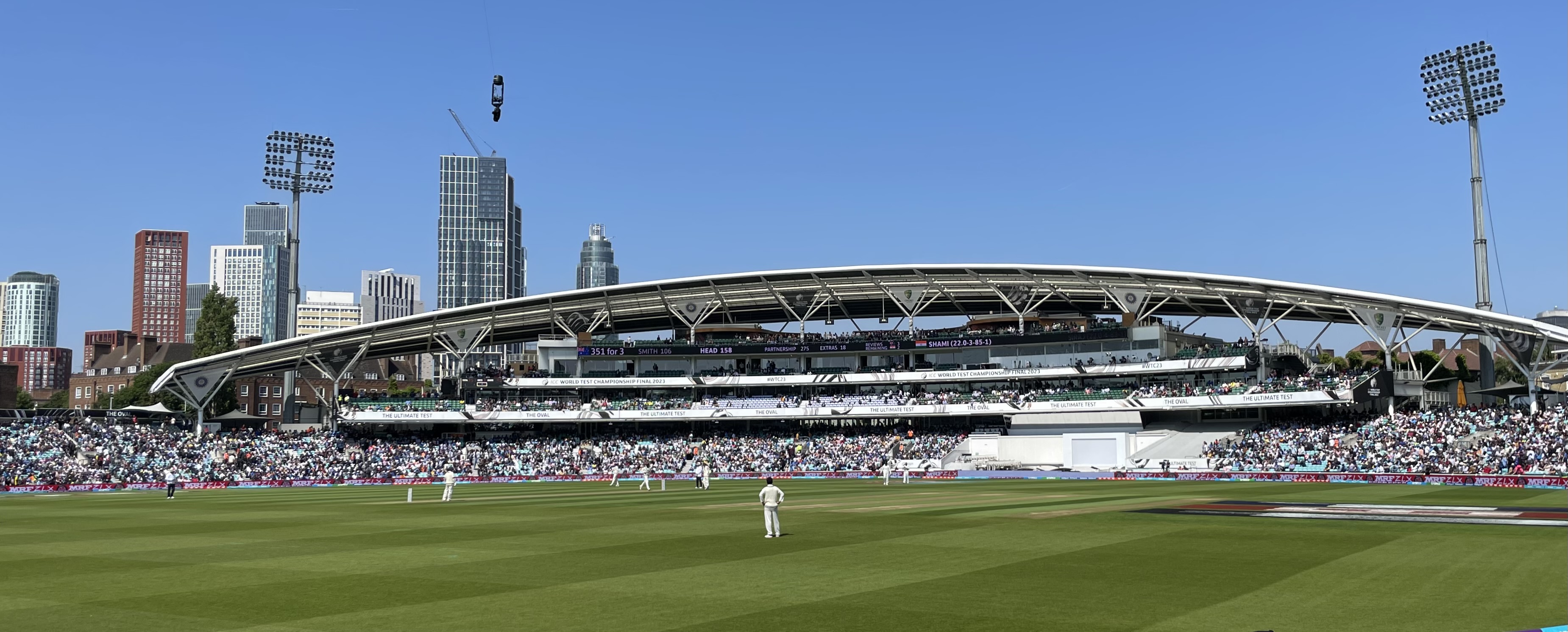
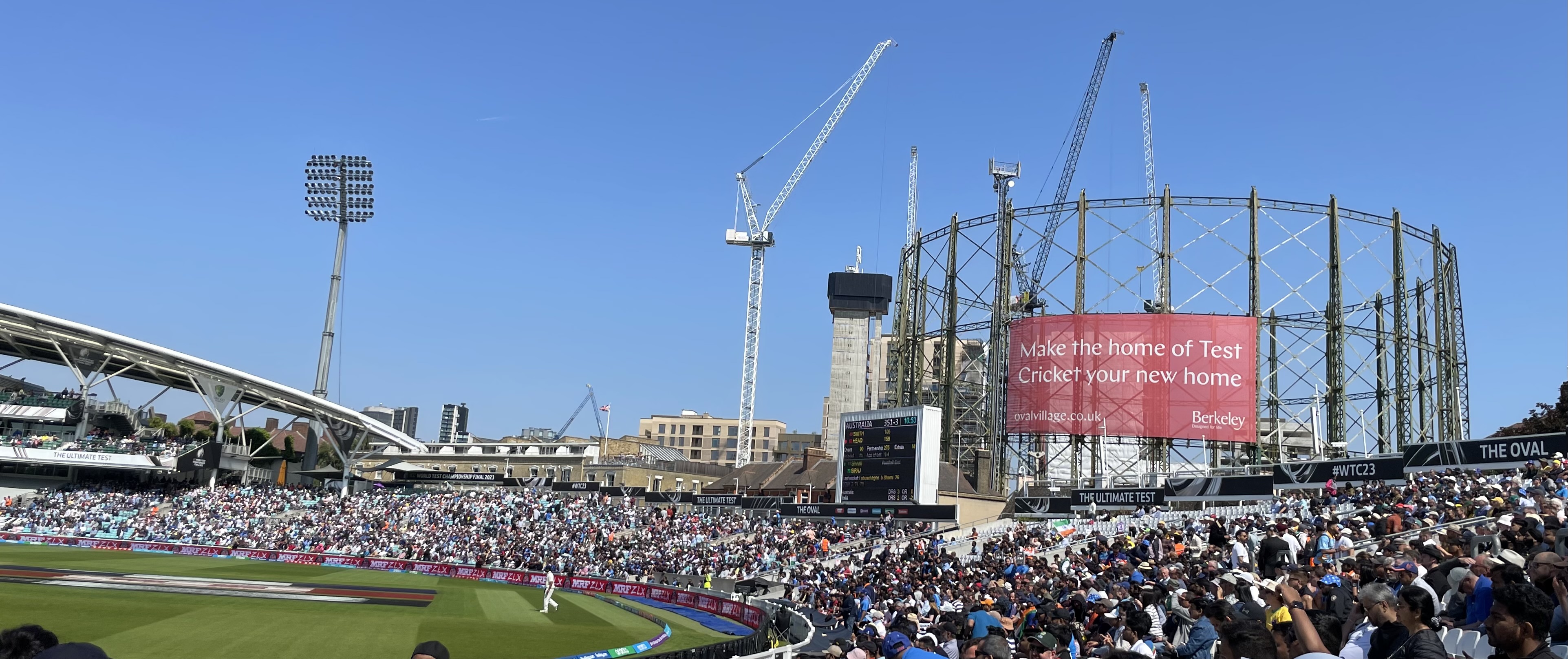
This is a brief history of the Oval Cricket Ground, which once hosted the first FA Cup Final and the original Ashes test match.
The Ground
The above photos were taken in 2023, looking towards Harleyford Road and the Vauxhall End of the cricket ground. The ground has come a long way since cricket was first played here in1846.
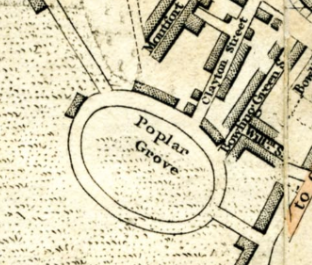
The memorable oval shape of the ground dates back to c1790 when an oval road was first laid around what was originally a cabbage garden and then a market garden. An 1818 map shows it as 'Poplar Grove' but it had become 'The Oval' by 1830. After a number of proposed building projects had failed, the Oval was opened as a cricket ground in 1846 following the expulsion of the Montpelier Club from their ground in nearby Walworth. Turfs were brought down from Tooting Common.
The Montpelier Club took its name from Montpelier Street (now Pelier St) a few hundred metres away in Walworth. The club played on its own ground (the Montpelier Tea Gardens) and also on the nearby Beehive Cricket Ground on Penrose St. This ground belonged to the Beehive & Cricketers pub on the corner with Carter Street. The pub was subsequently renamed the Beehive but had closed by the early 2020s. Both cricket grounds were developed for housing.
Cricket , and other games requiring a reasonably level turf, really took off when lawnmowers were invented. The first lawnmower was patented in 1830 and other companies entered the market after 1855 when the patent expired.
Here is an 1850s painting showing the old market garden buildings in use as the pavilion etc. Click on the image to see a larger version.
This next photo (taken around 1870) shows part of the then Phoenix gas works to the right of the ground.
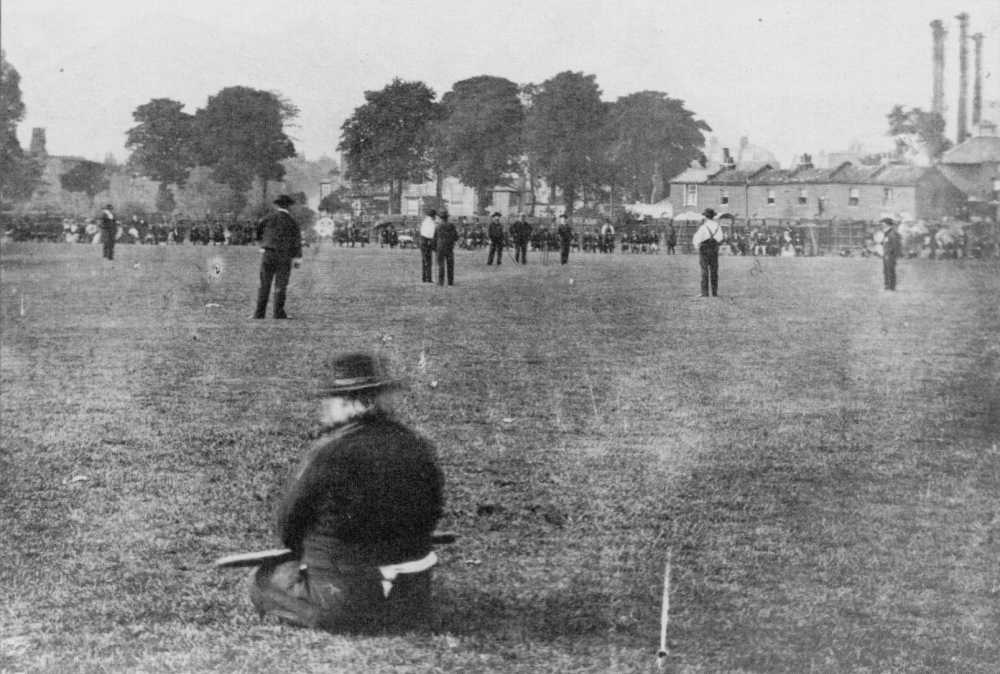
The ground was leased from the Duchy of Cornwall which still owns a good part of the rest of Kennington. The Duchy remains the landlord to this day. ( The Duke of Cornwall is also the Prince of Wales:- the heir to the British Throne.) In 1915 the then Prince of Wales granted the Surrey Cricket Club (the successors to the Montpelier Club) the right to use the Prince of Wales feathers for the club badge.
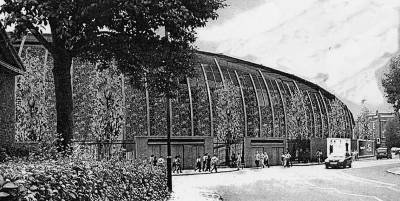 The Oval became the subject of some controversy in 2002/2003 when Lambeth Council approved plans by the Surrey County Cricket Club to develop the Harleyford Road side of the ground, despite fierce opposition from some local residents. The Club wanted to build a 26.5 metre stand - pictured left - and residents said that this would be out of scale with its surroundings, would create a canyon effect along a busy trunk road, and remove sunlight from a great number of local residents' homes.
The Oval became the subject of some controversy in 2002/2003 when Lambeth Council approved plans by the Surrey County Cricket Club to develop the Harleyford Road side of the ground, despite fierce opposition from some local residents. The Club wanted to build a 26.5 metre stand - pictured left - and residents said that this would be out of scale with its surroundings, would create a canyon effect along a busy trunk road, and remove sunlight from a great number of local residents' homes.
Radio and TV commentators still mention the old gasometers that loom over one side of the ground.

Not Cricket !
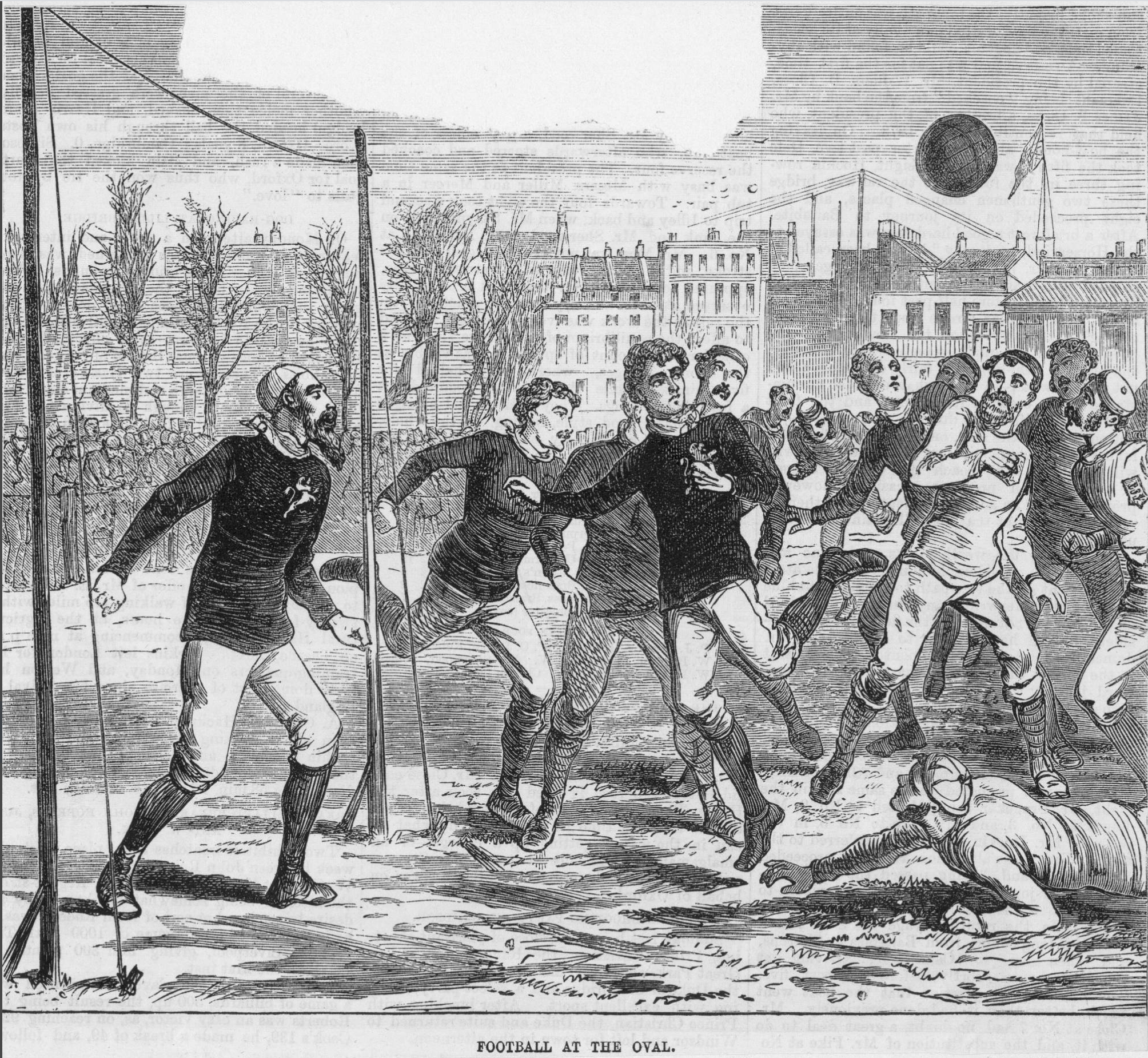
In its early days the Oval also hosted other sports. It was, for instance, where the first FA Cup Final was played on 16 March 1872 - in front of a 2000 strong crowd. 15 teams had competed in the inaugural FA Challenge Cup tournament. One of the teams that reached the final was Leytonstone's Wanderers Football Club who beat the Royal Engineers 1-0.
Those first teams were created so as to allow public school boys to carry on playing after school or university so the Oval's well heeled spectators could easily afford the 'exorbitant sum' of one shilling (5p) to watch the game. Within 10 years, however, football fever had spread more widely and working class teams began vying for the FA trophy.
The above picture was drawn in 1876.
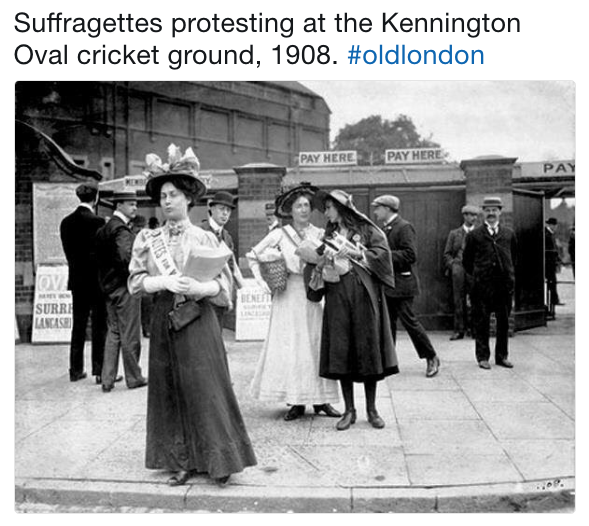 The Oval also hosted the first England v Scotland and England v Wales rugby union matches.
The Oval also hosted the first England v Scotland and England v Wales rugby union matches.
The Oval hosted an endurance walking event in 1851 in which Richard Manks covered 1,000 miles in 500 hours, walking round the Oval's outfield. To help him at night, lamps were hung around the ground - making this arguably the world's first floodlit sporting event.
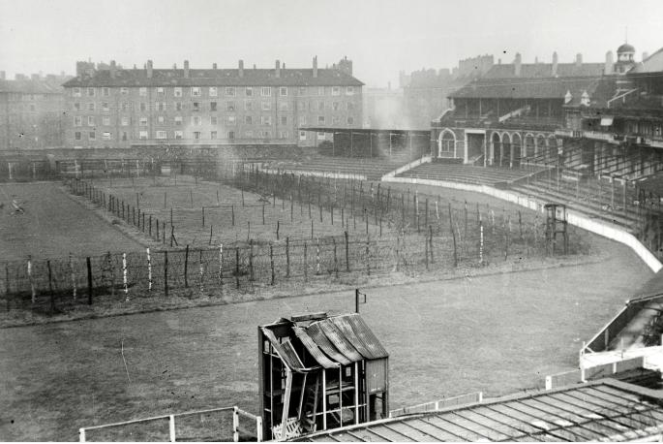 The large crowds who visited the Oval meant that it was a good place for the Suffragettes to demonstrate.
The large crowds who visited the Oval meant that it was a good place for the Suffragettes to demonstrate.
The ground was set up as - but never used as - a Prison of War Camp during the Second World War. (Photo on left)
And a German airman landed near the Oval in 1940:- see separate story.
Cricket
In 1880 the Oval hosted the first 'Test Match' to be held in England since the series began in Melbourne in 1877. WG Grace, scored the first ever century for the home side. He was also joined in the team by his two brothers, Fred and EM, the first and last time three brothers have represented England.
A disastrous performance by England at the same ground, two years later, led to a mock obituary and "the Ashes":- see further detail below.
The first Test match not to involve England and Australia took place in 1888 when South Africa played England.
The Ashes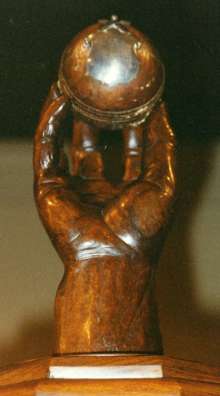
The August 1882 Oval "Test" was very exciting, with the Australians all out for only 63 runs in their first innings. But their ace bowler Fred Spofforth ensured an English collapse when he took 14 English wickets for only 90 runs. Their equally ace wicketkeeper, Jack Blackham, kept the ball as a souvenir and it is now on show at the Melbourne Cricket Ground:- see photo on right.
The media were just as cruel then as they are now and the satirical magazine "Punch" asked whether the English team had "want of devil, coolness, nerve and backbone". And "The Sporting Times" carried this mock obituary for English cricket, "In Affectionate Remembrance of ENGLISH CRICKET, which died at the Oval on 29th August 1882, Deeply lamented by a large circle of sorrowing friends and acquaintances. R.I.P. N.B. - The body will be cremated and the ashes taken to Australia.".
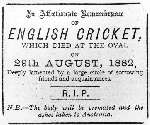 The English team travelled to Australia the following winter (by ship of course - and it was summer in Australia) and their captain, the Honourable Ivo Bligh, referred to "the ashes" in a speech around the time of their first match. This reference was picked up by the ladies of the Clarke family's estate where the tourists stayed that Christmas. After a friendly match against the men in their family they presented some ashes (of what it is not known) to the tourists who then took them with them on their travels and back to England.
The English team travelled to Australia the following winter (by ship of course - and it was summer in Australia) and their captain, the Honourable Ivo Bligh, referred to "the ashes" in a speech around the time of their first match. This reference was picked up by the ladies of the Clarke family's estate where the tourists stayed that Christmas. After a friendly match against the men in their family they presented some ashes (of what it is not known) to the tourists who then took them with them on their travels and back to England.
Ivo Bligh returned to Australia later in 1883 to marry the Clarke's music teacher, Florence Murphy, one of the ladies who had presented the ashes. As Ivo was the second son of the Earl of Darnley (hence "the Hon."), and as his elder brother died before him, Ivo became the Earl of Darnley (usually shortened to "Lord Darnley") and Florence became Lady Darnley. They lived at Cobham Hall and kept the ashes there until the Earl died in 1927. His widow gave the ashes to the MCC in 1929.
The Earl's grandson, the then Lord Darnley, appeared on the radio in December 2002 to argue that the Ashes should not be returned to Australia as they were essentially the property of the Darnleys and only given to the MCC for safe-keeping.
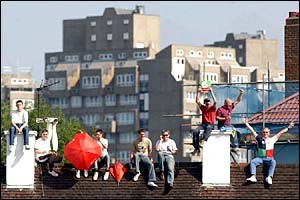 England won back the Ashes at the Oval in 2005, encouraged by rooftop fans - see left - as well as those who had paid for seats.
England won back the Ashes at the Oval in 2005, encouraged by rooftop fans - see left - as well as those who had paid for seats.
These rooftop spectators were not the first to find ways to watch the cricket without paying - see photos below. The larger one was taken during the 1953 Ashes test.
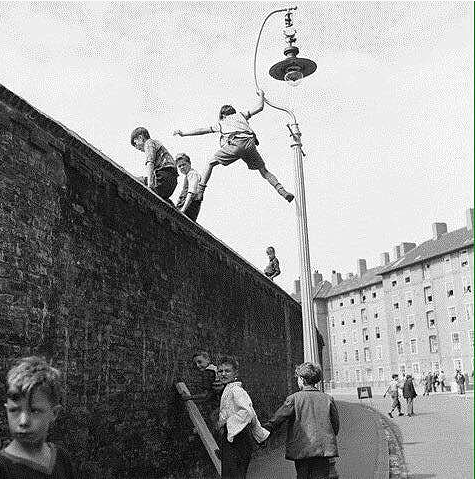
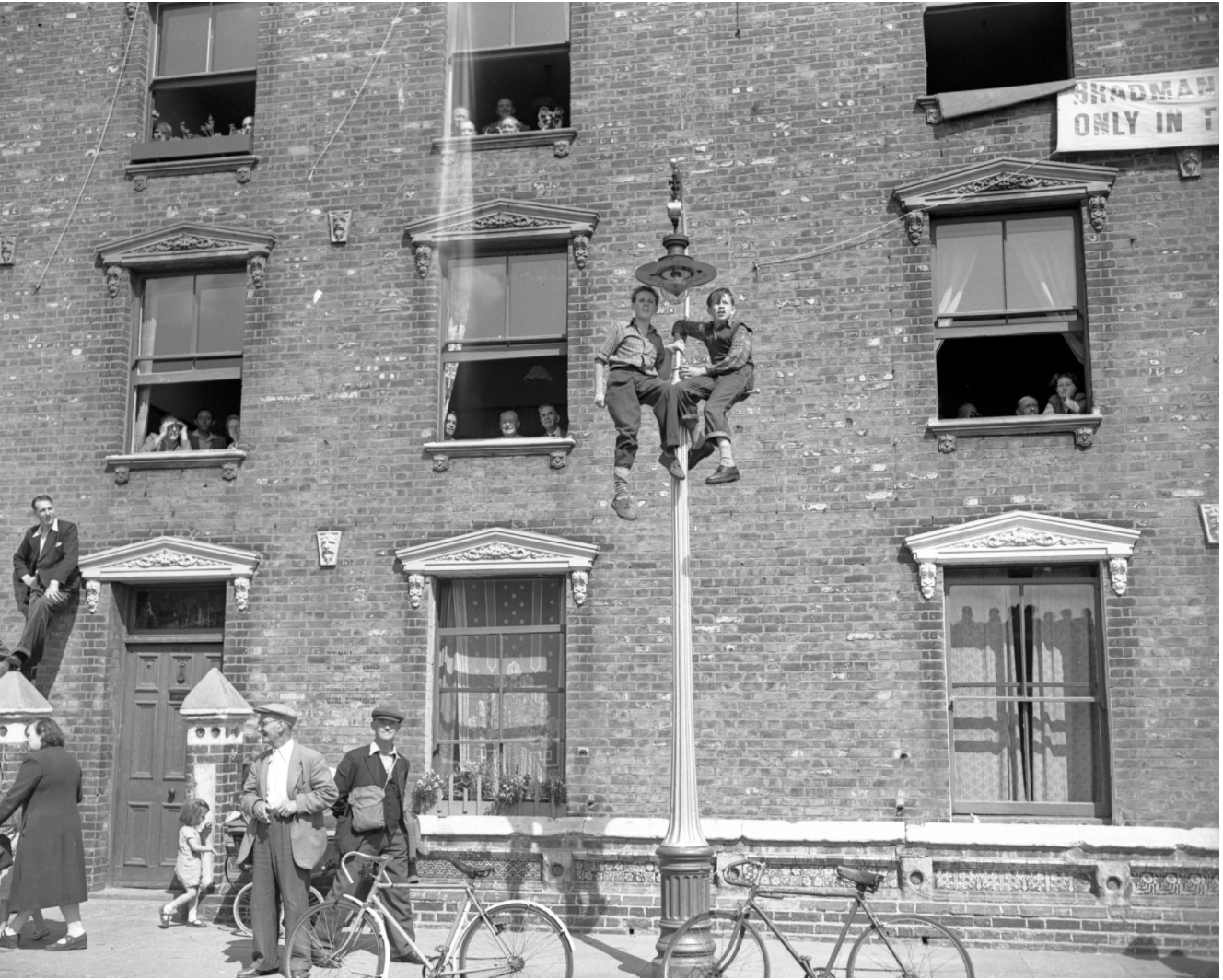
Here is a nice aerial view from 2001. You can click on the image to enlarge it.
The early 2020s saw the development of the famous gasometers:-
And here is the ground in December 2022:

Martin Stanley
